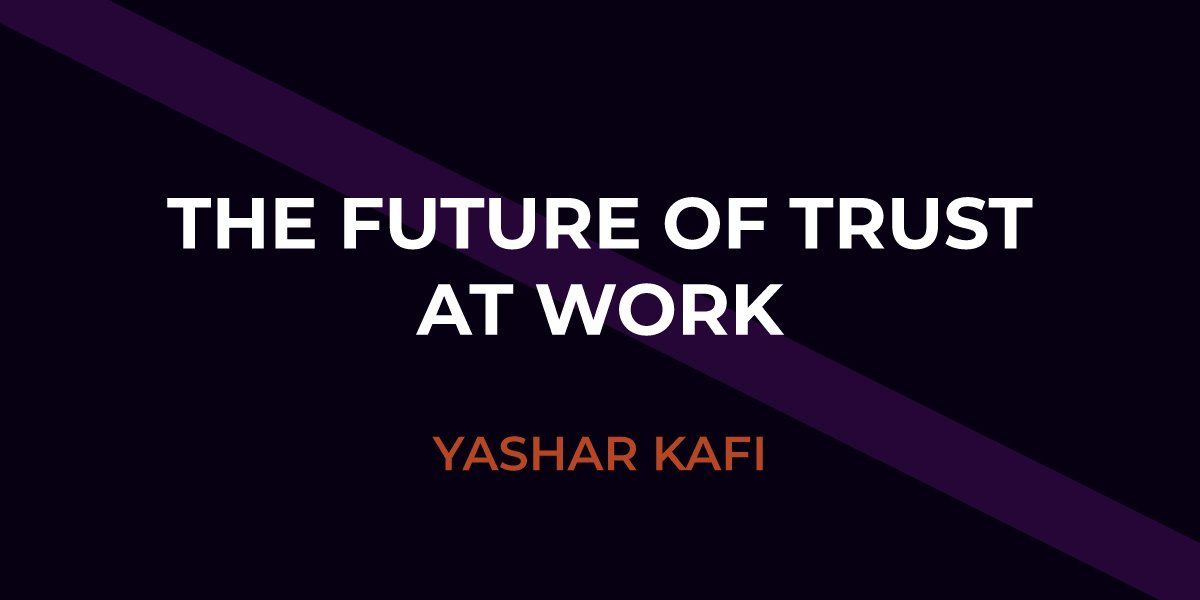The Future of Trust At Work
In the social sense, trust has many insinuations, but the general definition of the word usually refers to a two-way situation. One person or party will agree with another to provide a service or do something. Assuming both parties meet their mutually agreed action-points, they move towards a common objective together. Trust applies to all aspects of life, but today I’m going to focus on trust in the workplace. Trust is crucial for any successful home or work-life relationship. We will all work better, faster, and more effectively when it is present.
Why Is Trust So Important?
All businesses are built on a solid foundation of relationships shared between employers and employees, employees and their customers, and stakeholders, both internal and external. And what’s the number one cornerstone of any relationship? Trust, of course. While you may disagree with your colleagues on certain aspects of the business or operations, as long as there’s a level playing field, mutual respect, and the acceptance of differing opinions without aggression or arguments, a bond of workplace trust begins to fuse.
If a workplace lacks trust, as a leader, it’s hard to get your team to reach an agreement or consensus on almost anything. But before you can establish the key factors that build trusting relationships across your teams, you need to first understand that there are two types of trust.
Individual Trust
There is individual trust, which is defined as the congruence between what two parties say and do. It’s an attitude that all employees should be able to rely on, have faith in, and they should feel that they can depend on their colleagues to play their part.
Systemic Trust
Systemic trust is a little different. It’s best defined by the peer-to-peer, business-to-client, business-to-business kind of relationship. Everybody in these scenarios goes into agreement and collaboration to grow their businesses together in one way or another. It’s the trust between the developers and their vendors. To a certain extent, it’s each party trusting in one another to sustain a mutually beneficial partnership—this is often in the form of multiple teams across various organizations collaborating.
Both individual and systemic trust is vital for the longevity of successful partnerships. Systemic trust is an absolute must when staff from one organization are working alongside people from another, without previously getting to know them. And on an individual level, you must rely on that systemic trust too.
The Dimensions of Trust
Trust tends to be built through actions, not words, and there are four key elements to look out for in employees or employers that signify their trustworthiness.
Clued Up and Trustworthy: Competence
Collaborations between staff are doomed to fail if each individuals’ skillset isn’t complimentary of others in the group. You need everybody to be capable with talent in their role, and general comprehension of every other role required. Each person should bring something to the table in a collaborative effort, and if some person can’t manage it, it’s challenging for the others to fill the void.
Honest and Ethical: Integrity
If you knew that somebody in your team tends to steal the glory at the end of the project, would you want to risk collaborating with them? Probably not. If you’ve got anybody on the project who has a tendency to do so or that lacks integrity in general, there will be countless issues between your colleagues. Issues that are rooted in a lack of trust—which damages the working relationship.
Steadfast and Committed: Reliability
Being able to rely on your colleagues is imperative in any working scenario. If somebody misses a deadline, doesn’t follow through with their part of the job, or repeatedly falls short of expectation, the rest of the team will be disappointed and lack trust.
Open and Contributory: Communication
Somebody can be the best in the business at what they do, and they can be trustworthy in every other aspect. But if there’s poor communication or a lack of it, nothing else matters. Collaboration is dependent on clear, concise, and honest communication. Without it, minds cannot conceive, and ideas cannot be born.
In collaborative environments, trust is at the core of all successes. It’s at the heart of each individual’s success within partnerships. It’s a foundation, or even a springboard, that allows organizations and teams to complete projects and drive their businesses forward in an increasingly competitive landscape.




